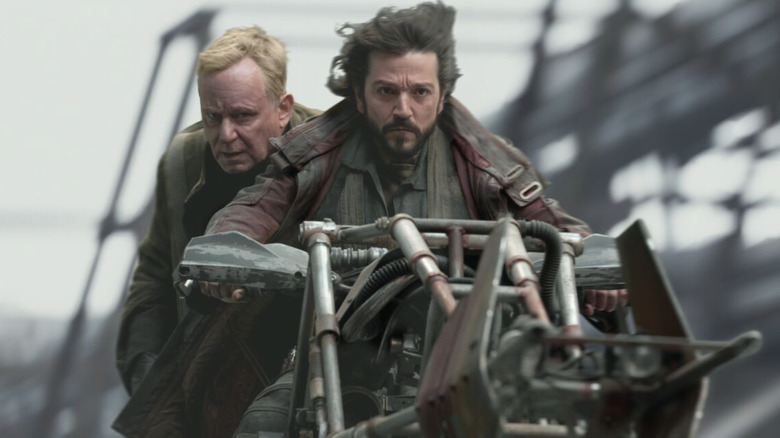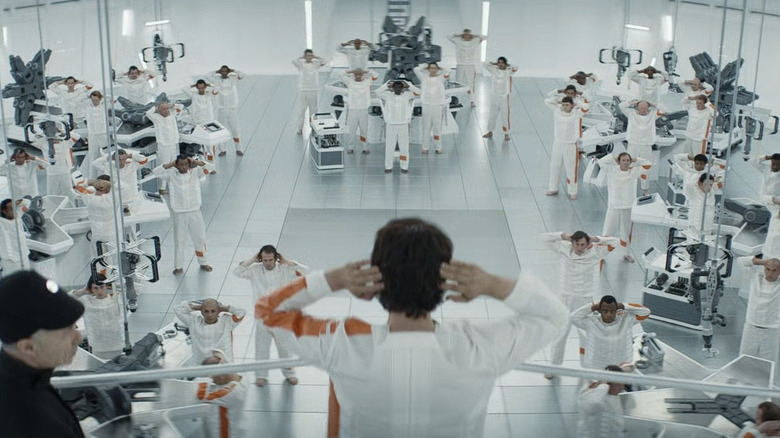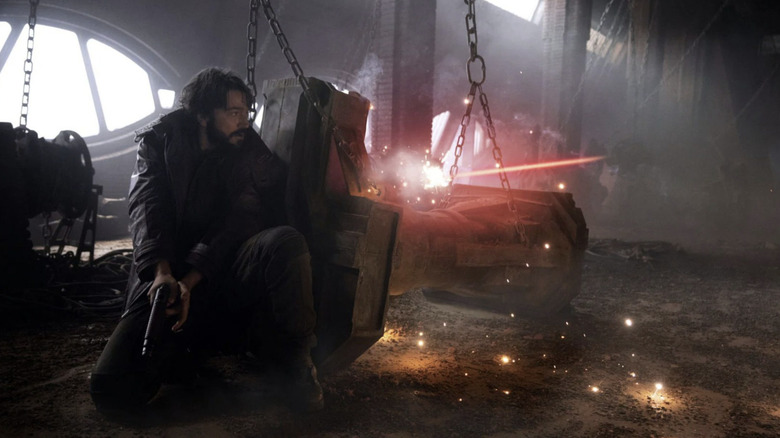Tony Gilroy Made Sure Andor's Action Scenes Always Had A 'Hook'
Everything about "Andor" season 1 feels like a deviation from the other live-action "Star Wars" series to date. From the structure of its 12-episode first season into distinct narrative arcs to the methodical pacing of the show, "Andor" clearly strives to focus more on the story it's telling than the galaxy it takes place in. While some might consider certain episodes of the show to be dragged out, series creator Tony Gilroy's intentions were always to ground every event on the show with strong emotional stakes. The same rules would apply when it came time for the action in the series. After all, at the end of the day, "Andor" is still a "Star Wars" show, meaning there has to be a fight involving blasters or lightsabers at some point.
What makes the action in "Andor" work on such an emotionally engaging level is the intricate build-up Gilroy and his creative team provide for each and every set piece. Whether it's season 1's climactic Ferrix sequence or the massive prison escape on Narkina 5, there's always a "hook" that leads into the action, keeping viewers on the edge of their seats. Gilory deliberately elevates the typical "Star Wars" spectacle on the show with tension built around characters, all while exercising enough restraint to help make each individual set piece feel unique.
Working with limitations to create tension
In a conversation with the official Star Wars website, series creator Tony Gilroy talked about how his experience with action taught him how to keep things engaging when the blasters come out:
"I've done action now for a long, long time, and the key to it — there are several keys to it — is to have a very specific place and a very specific set of limitations to work against. The best action scenes are the ones that have the most character conflict in them...The overarching other part of it is an error."
Gilroy has previously co-written the screenplays for both the original "Bourne" trilogy starring Matt Damon and "The Bourne Legacy," and all of these action-fueled espionage movies show the director's fundamental understanding of adding tension to a scene. Just like everything else in "Andor," rather than relying on the more fantastical aspects of the "Star Wars" universe, Gilroy opts to focus on simple mistakes that can create tension through an unexpected problem for the main characters. For example, consider the start of the prison breakout sequence:
"In the prison, for me, the key to that sequence is when the kid jumps up onto the railing, and it breaks from his weight. That little bit of reality, that mess up, that error, is the hook for me to get involved. You always have to have a hook. There has to be something different about it. Aldhani has a hook, and the funeral has a hook. Every action sequence that we're doing has a hook to it. It has something special about it."
Showing restraint in the Star Wars galaxy
The humanity at the center of "Andor" drives the action scenes and the series as a whole. Just as the series' protagonists have human qualities that are easy to empathize with, the Imperial forces looming over the show's characters aren't larger-than-life like most other "Star Wars" bad guys. The villains also have human qualities that are primarily negative and parallel real-world individuals in creative ways. The limitations Tony Gilroy places on "Andor" aren't just in terms of action but also world-building and character development.
Gilroy and the rest of the team behind "Andor" can only do so much with the prequel series, which is set relatively close to the events of "Rogue One" and Cassian's death. Because of this, "Andor" makes an excellent case for future "Star Wars" series to show a similar level of restraint rather than attempting to make things bigger to draw viewers in. The action in "Andor" hits so hard because of the minor stuff it does with its characters — something that will hopefully carry over in the second season.
"Andor" is streaming on Disney+.


